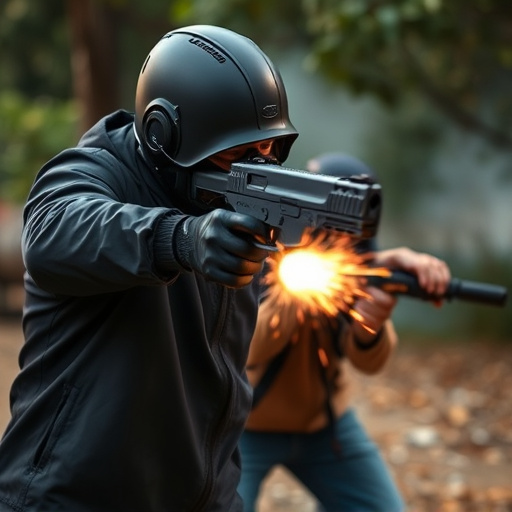Tactical Stun Gun Holsters: Safety, Accessibility, and Neurological Considerations
While stun guns offer self-defense benefits, they can cause significant neurological issues due to e…….
While stun guns offer self-defense benefits, they can cause significant neurological issues due to electrical pulses affecting muscle control and neural signals, leading to short-term symptoms like dizziness and confusion, and potential long-term effects that are less understood. When choosing a holster, prioritize safety and accessibility to minimize these risks; consider materials, design, and attachment for optimal fit, ensuring it accommodates the stun gun's size and weight without causing discomfort, thereby enhancing reliability and quick deployment in emergencies.
“In today’s safety-conscious world, understanding the potential risks and benefits of stun guns is paramount. While often touted as non-lethal weapons, it’s crucial to explore their neurological side effects, offering a comprehensive overview of their impact on the human body.
This article delves into tactical stun gun holsters, an essential accessory for optimal safety and accessibility. By examining various options, we aim to guide users in making informed decisions, ensuring they are equipped with not just a powerful tool but also reliable protection.”
- Understanding Stun Gun Neurological Side Effects: A Comprehensive Overview
- Exploring Tactical Stun Gun Holster Options for Optimal Safety and Accessibility
Understanding Stun Gun Neurological Side Effects: A Comprehensive Overview

Stun guns, while effective in self-defense, deliver an electric current that can have significant neurological side effects. When deployed, a stun gun generates high voltage, low amperage electrical pulses, which disrupt muscle control and cause temporary paralysis by disrupting the neural signals to muscles. The impact can vary greatly based on factors like the device’s power output, the area of contact, and the individual’s physical build and sensitivity.
Long-term effects are not well-documented, but short-term neurological symptoms include dizziness, disorientation, confusion, and even temporary memory loss. In some cases, individuals may experience prolonged sensation changes, muscle weakness, or headaches after exposure to a stun gun. It’s crucial to understand these potential side effects when choosing a holster for better accessibility and safety during emergency situations, ensuring the device is readily available while minimizing unintended impacts on users.
Exploring Tactical Stun Gun Holster Options for Optimal Safety and Accessibility
When considering tactical stun gun holster options, it’s crucial to prioritize both safety and accessibility. The last thing you want is a holster that compromises your ability to reach or deploy your stun gun quickly in an emergency situation. Moreover, opting for a high-quality holster can significantly reduce the neurological side effects associated with stun guns, ensuring reliability and minimizing risks.
Explore various materials, designs, and attachment methods to find the perfect fit for your needs. For instance, durable Kydex holsters offer superior retention and easy drawing capabilities, while leather alternatives may provide more comfort and a lower profile. Consider also the size and weight of your stun gun model when choosing a holster, ensuring it fits seamlessly without causing bulk or discomfort during everyday carry.
When considering tactical stun gun holster options, it’s crucial to balance safety, accessibility, and comfort. By understanding the potential stun gun neurological side effects discussed in this article, you can make an informed decision on the right holster for your needs. Opting for a high-quality, well-designed holster ensures not only easy access during emergencies but also minimizes risks associated with stun gun usage. Remember, the right gear can be a game-changer when it comes to personal safety.


